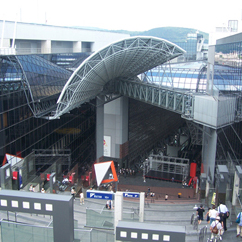High Speed Train and new technological and functional innovations
Abstract
Nowadays high speed railway infrastructure and its new stations influence radically both the planning development of areas where stations and railway infrastructure are located on, both the spatial and temporal relationships between different town centres connected by the rail network. The station-building functions are changed and travel demand is changing because it promotes the use of railways, for the track served by High Speed Train, instead of airplane and car. Stations are also important to the areas they serve. In Italy, on the wake of the French model, Italian national railways group (Gruppo Ferrovie dello Stato RFI), in order to make more comfortable and efficient the trip on High Speed Train, has equipped the new trains with numerous technological innovations. About the use of new technologies, this paper individualizes the custom variations users in according to services changing supply predisposed by the transport Companies. The technology used on the new High Speed Trains changes therefore the concept of the trip: the increasing quality value brought in using Wi-Fi technology on the new trains, makes the choice of railways more advantageous as regards to the other transport modes like airplane or car. This paper has the aim of individualizing the new urban role of the High Speed Train stations and to underline how is changing travel demand and supply because of the introduction of high technology. There is a new important role of planning: some of our important cities are redeveloping in ways which incorporate the High Speed station at their heart, as a key feature in the wide ranging accessibility that is vital to modern service sector businesses. In parallel, stations are important in regeneration areas for offering wider connectivity to underpin the revitalization of local economies and societies.Downloads

Copyright (c) 2014 Tema. Journal of Land Use, Mobility and Environment

This work is licensed under a Creative Commons Attribution 4.0 International License.
Authors who publish in this journal agree to the following:
1. Authors retain the rights to their work and give in to the journal the right of first publication of the work simultaneously licensed under a Creative Commons License - Attribution that allows others to share the work indicating the authorship and the initial publication in this journal.
2. Authors can adhere to other agreements of non-exclusive license for the distribution of the published version of the work (ex. To deposit it in an institutional repository or to publish it in a monography), provided to indicate that the document was first published in this journal.
3. Authors can distribute their work online (ex. In institutional repositories or in their website) prior to and during the submission process, as it can lead to productive exchanges and it can increase the quotations of the published work (See The Effect of Open Access)
